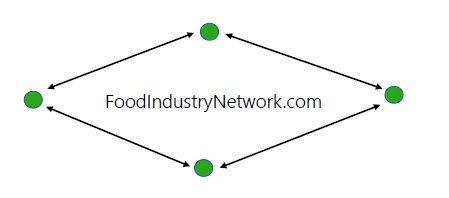Pulse Weekly: Prices for Kabuli chickpeas softer to sideways for balance of 2024

Glacier Farm Media | MarketsFarm – Prices for Kabuli chickpeas are likely to be softer to sideways heading into the new year, said Colin Young of Midwest Grain Ltd. in Moose Jaw, Sask.
Prairie Ag Hotwire reported Kabulis lost 3/10ths to a half-cent per pound in the last week. The smaller seven-to-eight-millimeter chickpeas ranged from 25.8 to 41.8 cents/lb. with the larger nine-to-10 millimetres at 39.8 to 44.8 cents/lb.
Young noted there are two reasons for this, with one being the Canadian crop that produced far fewer large Kabulis due to the excessive heat this summer.
Read Also


U.S. grains: Soybeans recoup losses, but Brazil crop outlook caps gains
U.S. soybean futures rebounded on Tuesday in a short-covering and bargain-buying bounce from the prior day’s losses, although gains were limited by favorable crop prospects in South America, where Brazil is due to harvest a record crop early next year.
“We have a huge supply of seven-to-eight-millimetre chickpeas and a big shortage of nine-millimetre chickpeas,” he said.
Any sales that include at least 30 per cent or more of the larger chickpeas will fetch a premium as the world generally grows the smaller ones, Young said.
He added that Argentina recently wrapped up its chickpea harvest and their marketing is very aggressive, which results in lower Canadian prices.
“That’s the simple reason for the softness as we head into Christmas, which isn’t atypical,” he said.
Young explained the second reason, that 70 per cent of the world’s chickpeas are harvested from late August to the end of November, starting in Turkey, then onto Russia, Canada, and the United States, then ending with Argentina and Australia.
A good portion of the remaining 30 per cent comes out of India and Mexico, with their harvests starting at the end of February and pushing through to April.
Mexican chickpeas tend to be on the larger side and because their premium, they wouldn’t push prices lower.
“Indian production absolutely sells aggressively and potentially hold chickpea markets in check come late winter, early spring,” Young said, suggesting there’s a window approaching for prices to rise.
“There’s an opportunity for some price recovery post-New Year’s to pre-Valentine’s Day,” he highlighted, noting there’s not much to push prices either way from the balance of 2024. He noted the only thing that would ramp up prices would be some sort of major disaster to India’s chickpeas.
Prices for Kabuli chickpeas are likely to be softer to sideways heading into the new year, said Colin Young of Midwest Grain Ltd. in Moose Jaw, Sask.
Young noted there are two reasons for this, with one being the Canadian crop that produced far fewer large Kabulis due to the excessive heat this summer.
“We have a huge supply of seven-to-eight-millimetre chickpeas and a big shortage of nine-millimetre chickpeas,” he said.
Any sales that include at least 30 per cent or more of the larger chickpeas will fetch a premium as the world generally grows the smaller ones, Young said.
He added that Argentina recently wrapped up its chickpea harvest and their marketing is very aggressive, which results in lower Canadian prices.
“That’s the simple reason for the softness as we head into Christmas, which isn’t atypical,” he said.
Young explained the second reason, that 70 per cent of the world’s chickpeas are harvested from late August to the end of November, starting in Turkey, then onto Russia, Canada, and the United States, then ending with Argentina and Australia.
A good portion of the remaining 30 per cent comes out of India and Mexico, with their harvests starting at the end of February and pushing through to April.
Mexican chickpeas tend to be on the larger side and because their premium, they wouldn’t push prices lower.
“Indian production absolutely sells aggressively and potentially hold chickpea markets in check come late winter, early spring,” Young said, suggesting there’s a window approaching for prices to rise.
“There’s an opportunity for some price recovery post-New Year’s to pre-Valentine’s Day,” he highlighted, noting there’s not much to push prices either way from the balance of 2024. He noted the only thing that would ramp up prices would be some sort of major disaster to India’s chickpeas.
Source: Farmtario.com

